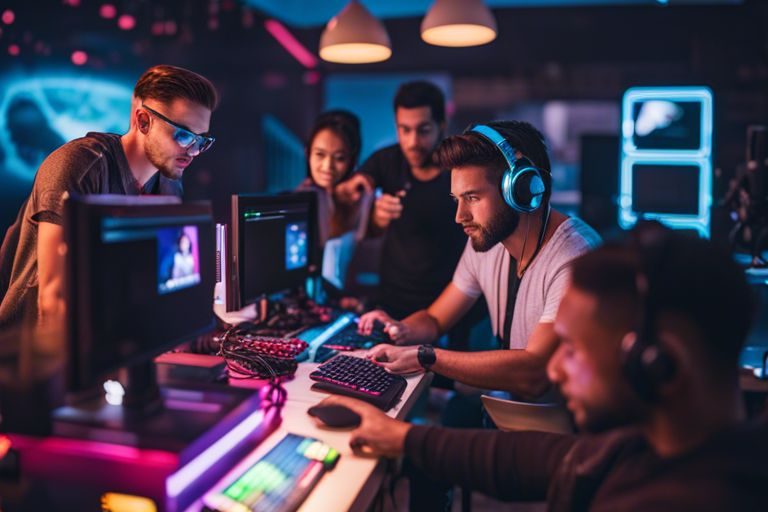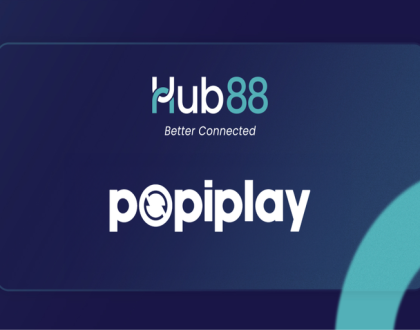Customizable Gaming Experiences

With the ever-evolving world of gaming, customizable gaming experiences have become a game-changer for both developers and players. This innovative approach allows individuals to tailor their gameplay to suit their preferences, creating uniquely personalized interactions within the virtual world.
Defining Customization in Gaming
Character Customization
Character customization in gaming refers to the ability for players to personalize and modify the appearance, abilities, and characteristics of their in-game avatars. This feature allows players to create a unique identity within the game world, making the gaming experience more immersive and engaging.
Environmental Manipulation
Gaming environments that can be manipulated by players offer a dynamic and interactive element to gameplay. This type of customization allows players to change the world around them, either through altering terrain, building structures, or influencing the weather. It adds a strategic layer to gameplay and enhances the sense of agency and control that players have over their virtual surroundings.
The ability to manipulate the environment can have a significant impact on gameplay, opening up new paths, creating obstacles, or influencing the outcome of events in the game. Players can use environmental manipulation to their advantage, strategizing and adapting to different situations based on how they alter the game world.
Narrative Choices and Branching Storylines
Choices in gaming refer to the decisions players make throughout the game that impact the storyline, character interactions, and ultimately the outcome of the game. Branching storylines are a result of these choices, leading to different paths and endings based on the player’s decisions.
Players are given the power to shape their gaming experience through narrative choices, allowing for a more personalized and immersive journey. The consequences of these choices can be significant, affecting relationships with in-game characters, the direction of the story, and the ultimate resolution of the game.
Customization Mechanics and Tools
In-Game Editors
To provide players with the ability to personalize their gaming experiences, many developers incorporate in-game editors that allow players to customize various aspects of the game. These editors typically include options to modify characters, create custom levels, and even design unique gameplay mechanics. Players can tweak details to suit their preferences, enhancing their immersion and enjoyment of the game. In-game editors empower players to express their creativity and tailor the game to their liking, promoting engagement and replay value.
Modding Communities
One of the most significant aspects of customization in gaming is the presence of modding communities. These communities consist of players who create and share user-generated content such as custom levels, new characters, or gameplay modifications. Modding communities extend the lifespan of games by providing fresh content and experiences beyond what the developers initially offered. They foster a sense of community among players who share a passion for a particular game and enable the exchange of ideas and creativity.
Design choices that encourage player creativity and community interaction can lead to a more vibrant and engaging gaming experience. Developers who support modding communities demonstrate a commitment to fostering player agency and empowerment, establishing strong connections between players and the game environment. Engaging with modding communities can also help developers gather valuable feedback and insights for future updates or projects, contributing to the longevity and success of the game.
The Role of Artificial Intelligence in Customization
Dynamic Difficulty Adjustment
Once again, artificial intelligence is at the forefront of customizable gaming experiences with dynamic difficulty adjustment. AI algorithms are now able to analyze player performance in real-time and adapt the difficulty of the game accordingly. This means that as players progress, the game can become more challenging to match their skill level, providing a personalized and engaging experience.
Content Generation Based on Player Behavior
Dynamic Content Generation Based on Player Behavior is a groundbreaking feature made possible by artificial intelligence. By analyzing player actions and decisions, AI can generate custom content tailored to individual preferences. This creates a unique and immersive gameplay experience for each player, ensuring that no two playthroughs are the same.
Generation
Content Generation Based on Player Behavior utilizes machine learning algorithms to generate content that aligns with a player’s preferences. This can include anything from personalized quests and challenges to unique storylines and character interactions. By incorporating AI-driven content generation, developers can offer limitless possibilities for players to explore, keeping them engaged and invested in the game.
The Business of Personalization
Monetizing Customization Features
Unlike traditional one-size-fits-all gaming experiences, personalized gaming offerings provide players with the ability to tailor their gameplay to suit their preferences and style. This customization often extends to in-game items, character appearances, and even gameplay mechanics. For game developers and publishers, this opens up a whole new avenue for revenue generation.
An important aspect of personalized gaming experiences is the monetization of customization features. Players are often willing to pay extra for unique items or the ability to stand out in a crowded digital landscape. By strategically offering customizable options as paid upgrades or in-game purchases, developers can capitalize on players’ desire for personalization while simultaneously driving revenue.
Data Collection and Player Analytics
Features such as player analytics and data collection play a crucial role in tailoring personalized gaming experiences. By collecting and analyzing player data, developers can gain valuable insights into player behavior, preferences, and engagement patterns. This information can then be used to enhance customization features and create more targeted gaming experiences.
With player analytics, developers can track player progress, identify popular features, and even predict future trends. This data-driven approach not only improves the player experience but also enables developers to make informed decisions about which customization features to prioritize and how to monetize them effectively. By leveraging player data, developers can create a more engaging and profitable gaming ecosystem.
Psychosocial Impacts of Customization
Player Identity and Expression
Many gamers find personal fulfillment and self-expression through customization in gaming. Customizing avatars, characters, and worlds allows players to create representations of themselves or explore identities different from their own. This freedom of expression fosters a sense of ownership over the gaming experience, leading to a deeper connection with the game world and a stronger sense of immersion.
The Influence of Customization on Player Engagement and Retention
For an engaging gaming experience, customization plays a crucial role in attracting and retaining players. An element of personalization can significantly increase a player’s engagement level by making them feel more emotionally invested in the game. Customization options such as unique skins, outfits, or even personalized challenges create a sense of attachment and commitment to the game.
Expression through customization allows players to stand out from the crowd and showcase their individuality. This sense of uniqueness not only boosts player confidence but also encourages social interactions within the gaming community. As a result, players are more likely to stay engaged and connected to the game over an extended period.
Accessibility and Customizable Options
Difficulty Settings and Assist Modes
Not all gamers have the same level of experience or ability when it comes to playing video games. This is where customizable difficulty settings and assist modes come into play. One of the most important aspects of modern gaming is the ability to tailor the gameplay experience to suit individual preferences and skill levels.
Customizable Interfaces and Controls
Interfaces and controls are crucial elements in gaming that can greatly impact a player’s overall experience. By providing options to customize these aspects, game developers can enhance accessibility for a wider range of players. Interfaces that can be adjusted to accommodate different preferences and needs can make a game more inclusive and enjoyable for all.
Assist modes can provide features like auto-aim, increased health, or slower game speed to help players progress through challenging sections. These options can make games more accessible to players who may struggle with certain mechanics or difficulty levels. Creating a gaming experience that is open to customization not only promotes inclusivity but also allows for greater player enjoyment and satisfaction.
Challenges and Limitations
Customization: Balancing Customization with Gameplay
Now, one of the main challenges in providing customizable gaming experiences is balancing player customization with the core gameplay mechanics. Allowing too much freedom in customization can sometimes lead to unbalanced gameplay, where certain players have a significant advantage over others. On the other hand, restricting customization too much can limit player creativity and personalization, which are the key drivers of customizable gaming experiences.
Performance: Technical Constraints and Performance Issues
Performance is another critical aspect when it comes to offering customizable gaming experiences. The more options and features a game provides for customization, the more strain it can put on the technical capabilities of a platform. This can lead to performance issues such as lag, frame drops, and overall decreased gameplay experience.
Issues: It is crucial for game developers to find a balance between offering a wide range of customization options and maintaining optimal performance levels. Failure to address technical constraints and performance issues can result in negative player experiences, leading to frustration and potential disengagement from the game.
Future Trends and Innovations
Emerging Technologies in Customization
For a long time, the idea of personalized gaming experiences has been a distant dream for many players. However, with the advancement of technology, this dream is becoming a reality. With the rise of artificial intelligence, machine learning, and data analytics, game developers are now able to understand player behavior on a deeper level than ever before. This allows for more personalized gameplay experiences tailored to individual preferences.
The Expanding Role of Player Choice
NextGen gaming experiences are focusing more on player agency and the impact of choices within the game world. NextGen games are no longer linear narratives but adaptive ecosystems where player decisions shape the outcome of the game. This shift towards player-driven narratives creates more meaningful and engaging experiences, where players feel a sense of ownership over their in-game decisions.
Augmented reality and virtual reality technologies are also playing a significant role in expanding player choice in gaming. These technologies provide immersive experiences that blur the lines between the physical and virtual worlds, allowing players to make decisions and interact with the game environment in ways never before possible.
Summing up
Considering all points discussed, it is evident that customizable gaming experiences offer a personalized touch that enhances the overall player satisfaction and engagement. By allowing players to tailor various elements of games to their preferences, developers can create more immersive and enjoyable experiences that cater to a wide range of player preferences. This not only fosters a deeper connection between players and the game but also opens up opportunities for developers to innovate and explore new ways to engage with their audience.
When all is said and done, the personal touch provided by customizable gaming experiences is a valuable asset in the gaming industry that can lead to increased player retention and loyalty. As gaming continues to evolve, developers should consider incorporating customization features into their games to create more meaningful and immersive experiences for players. By understanding and meeting the diverse needs and preferences of their audience, developers can create games that resonate with players on a deeper level, ultimately leading to a more enjoyable and rewarding gaming experience for all.
FAQs:
What is character customization in gaming?
Character customization allows players to modify the appearance, abilities, and characteristics of their in-game avatars, enhancing immersion and personalization.
How do environmental manipulation features affect gameplay?
Environmental manipulation allows players to change the game world, influencing paths, obstacles, and outcomes, adding strategic depth and control to gameplay.
What are branching storylines in gaming?
Branching storylines result from player choices, impacting character interactions and game endings, providing a personalized narrative experience.
What role does artificial intelligence play in dynamic difficulty adjustment?
AI analyzes player performance to adjust game difficulty, ensuring a personalized challenge level for each player, enhancing engagement.
How do customizable interfaces and controls improve accessibility in gaming?
Customizable interfaces and controls accommodate diverse player needs and preferences, promoting inclusivity and enjoyment for all gamers.
Recommended Posts

Hub88 & Popiplay Enhance iGaming Content
July 1, 2024

Werner Becher Appointed CEO of Kambi Group
July 1, 2024

Denmark Gambling Regulations 2025
July 1, 2024



